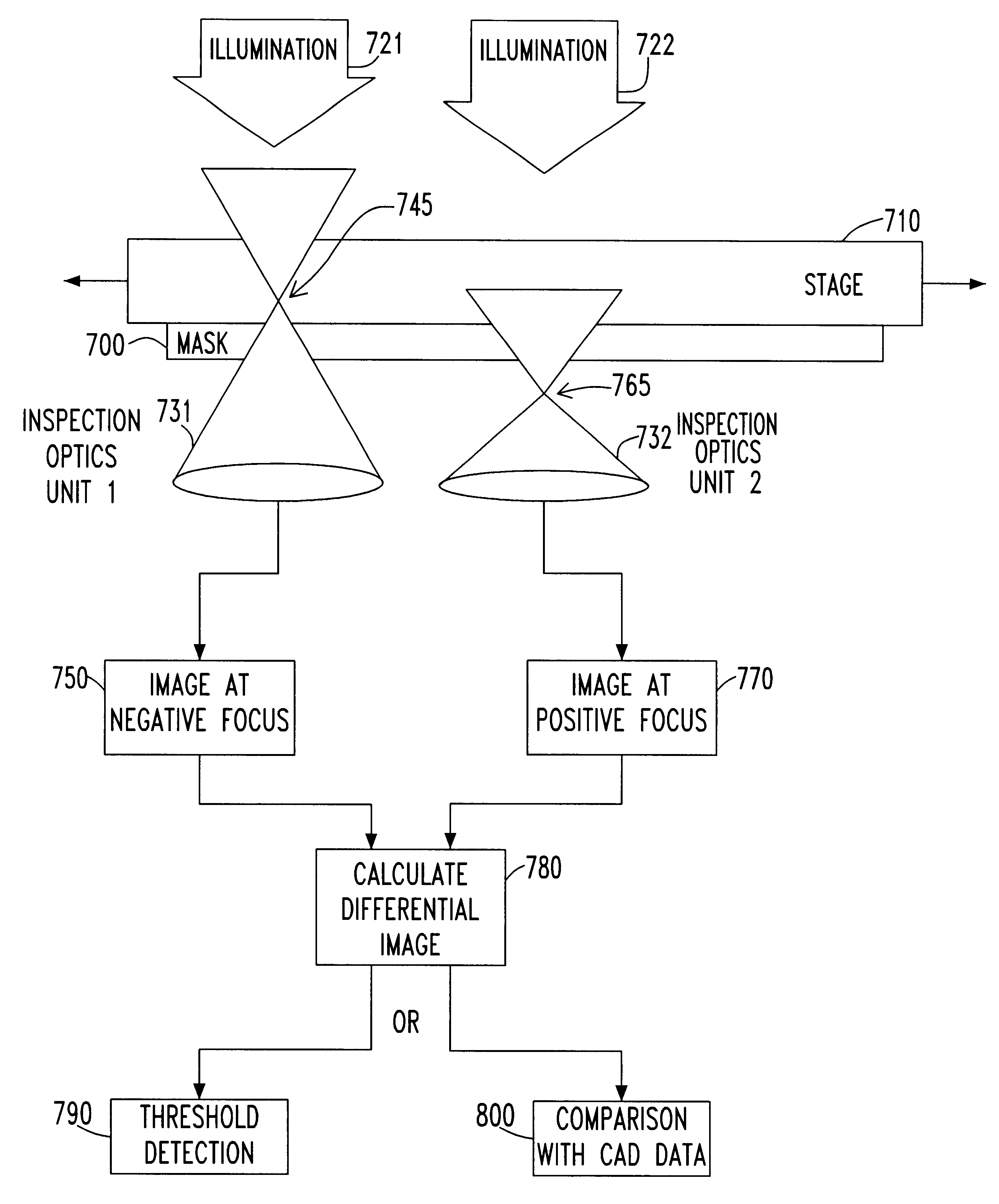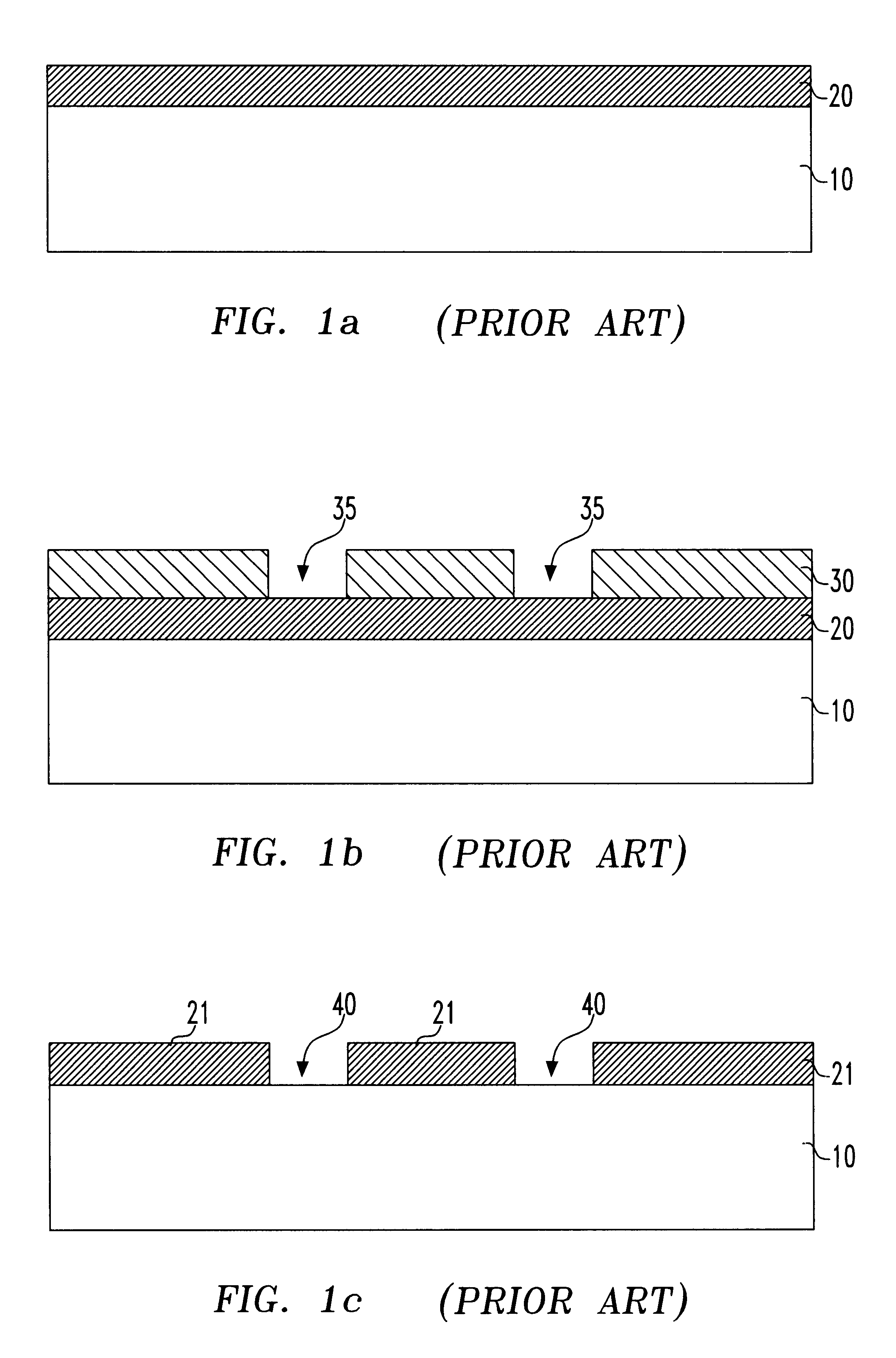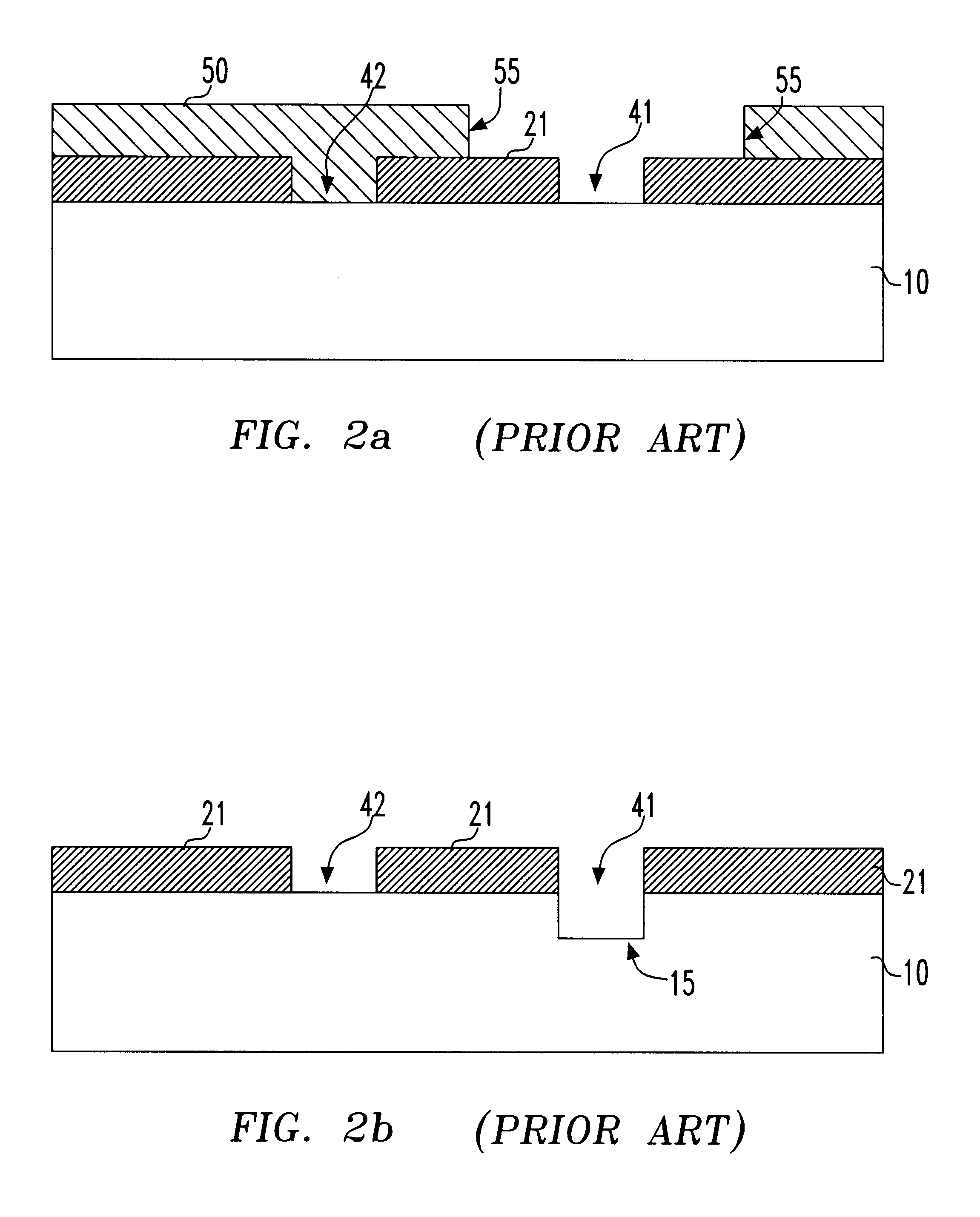Detection of phase defects on photomasks by differential imaging
a technology of differential imaging and phase defects, applied in the field of detection of phase defects on photomasks by differential imaging, can solve the problems of phase difference producing a destructive interference null between the two shapes, less adept at detecting transparent phase defects, and state-of-the-art inspection systems
- Summary
- Abstract
- Description
- Claims
- Application Information
AI Technical Summary
Benefits of technology
Problems solved by technology
Method used
Image
Examples
Embodiment Construction
The invention described herein for detecting phase defects on a mask takes advantage of asymmetric imaging characteristics that occur as a function of focal position when the phase of a feature (defined hereinafter as a desired shape on the mask) or defect (defined hereinafter as an undesired shape on the mask) does not equal to 0.degree. or 180.degree. or some multiple thereof as defined in equation (1), wherein .lambda. is the optical inspection wavelength. In the preferred embodiment of this invention a fabricated mask (either COG or PSM as described in the background section) which may contain phase defects or features is illuminated by light at the inspection wavelength and the transmitted (or reflected) image of the mask is measured by an optical lens or objective at two focus positions that are equally spaced about the optimum focus, also referred to as "best" focus (i.e., at a focal position which produces the maximum image contrast of the mask patterns) in a positive and ne...
PUM
| Property | Measurement | Unit |
|---|---|---|
| wavelength | aaaaa | aaaaa |
| phase defects | aaaaa | aaaaa |
| wavelength | aaaaa | aaaaa |
Abstract
Description
Claims
Application Information
 Login to View More
Login to View More - R&D
- Intellectual Property
- Life Sciences
- Materials
- Tech Scout
- Unparalleled Data Quality
- Higher Quality Content
- 60% Fewer Hallucinations
Browse by: Latest US Patents, China's latest patents, Technical Efficacy Thesaurus, Application Domain, Technology Topic, Popular Technical Reports.
© 2025 PatSnap. All rights reserved.Legal|Privacy policy|Modern Slavery Act Transparency Statement|Sitemap|About US| Contact US: help@patsnap.com



